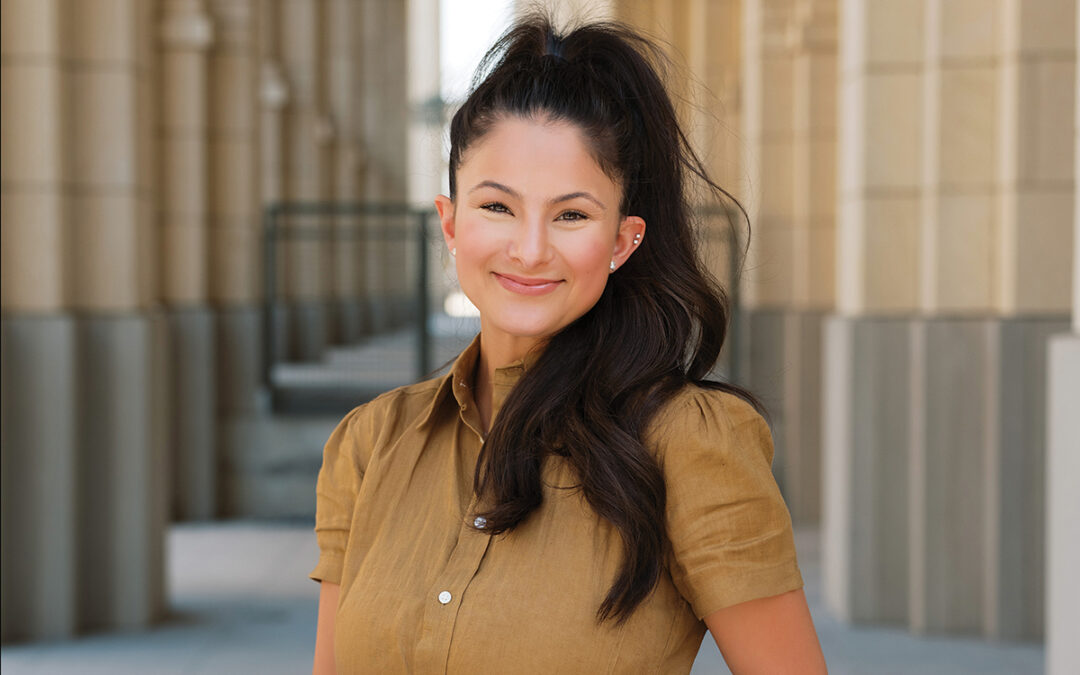When Louise Batz waited for her knee replacement surgery in the pre-op room of a San Antonio hospital in April 2009, “She was great, ready to go,” says her daughter, Laura Batz Townsend. A normally energetic, busy person, Batz enjoyed taking care of her grandchildren and helped her husband, Richard, with his interior-design business. Her last hospital stay had been 35 years earlier, when her daughter was born. Batz had put off her surgery for a few months while her husband recovered from a quintuple-bypass operation, timing the procedure so she would recover in time to welcome a new grandchild.
As the daughter, mother and sister of doctors, she was comfortable in the health care system, helping friends with problems find their way to the best treatment and vigilant about her own family’s health. Yet despite her background in the medical community, she made a mistake on some paperwork she had filled out earlier. “The rest of us were all focusing on Mom,” says Townsend. “On the form, she’d checked ‘Bilateral knee surgery.’ She thought it meant that both sides of her knee needed repair, but it meant both knees. It was a communications breakdown, and my aunt caught it.” With that last-minute correction, Batz’s surgery went smoothly. After an hour and a half, she was out of the operating room and on her way to the orthopedic floor. “The doctor said she had a ‘beautiful new knee’ and that she’d be able to go home in three days,” her daughter remembers. “As a family member, I was relieved. I thought we were through with the scariest time, that if she made it through the surgery, she’d be all right.”
Once settled into her room, Batz was given morphine for post-operative pain through a patient-operated system that limits the dosage but “goes into the system very quickly,” says Townsend. When Batz felt ill after eating some cream soup for dinner, she was given a first-generation anti-nausea medication that may cause drowsiness. Townsend sat with her mother until a nurse came to tell Batz she’d be given three medications later that evening — more morphine, a second pain medication and the anti-nausea drug. As Townsend remembers, the nurse asked Batz how she’d describe her pain on a scale of one to 10. “My mother said it was nothing like having a baby. I told the nurse I didn’t think she needed all (those medications).” Townsend returned to her parents’ house and spent some time with her father before going to bed at about 10:30 p.m. She woke up at 3 a.m. when someone from the hospital called to tell them that Mrs. Batz was having trouble breathing.
Townsend called her brother and uncle, both doctors, who reassured her that her mother was probably fine, but she rushed to the hospital anyway. When she reached her mother’s room, there was a security guard at the door. Batz had stopped breathing on her own and was being given oxygen. “Respiratory depression had caused a brain injury, and her heart had stopped pumping,” says Townsend. Batz was moved to the hospital’s intensive care unit, where she remained for 12 days. During that time, the family learned that Batz had had undiagnosed sleep apnea, a condition that made her more vulnerable to respiratory depression. While the apnea patterns had been picked up in the post-operative room, “that information got lost when she was transferred to the orthopedic floor,” says her daughter. There, Batz was given a combination of three drugs that depressed her respiratory system and did not receive the frequent monitoring that might have saved her life. Her family was asked to make the painful decision to take her off life support, “a gruesome, terrible thing,” says her daughter. By that time, the family knew that she would never recover – and they knew that she had died because of preventable medical error.
“That was the day I wasn’t a kid anymore,” says Townsend. “My mom was my best friend. I talked to her at least six or seven times a day. She took care of all of us, my brothers, my dad and me. She was the center of our whole family; our entire lives changed.” When Batz died, her devastated family decided to convert their grief into something positive. “At first, we asked each other, ‘Are we the unluckiest people in the world or does this happen to others?’” says Townsend. She soon found references to studies that showed that about 200,000 people die each year in the United States from preventable medical errors — the equivalent of a jumbo jet crashing every day. The night Batz was taken off life support was the start of a new phase of life for Townsend, who wrote the mission statement for what came to be the Louise H. Batz Patient Safety Foundation, a nonprofit organization dedicated to helping to prevent medical errors by educating patients and their families to promote a safe hospital experience.
“We didn’t want other families to experience what we did,” says Townsend, who had worked for 10 years as grants development manager for the youth programs of the San Antonio Sports Foundation (now San Antonio Sports). In setting up the new foundation, she tried to follow her mother’s example: “She was a great caretaker, a hopeful person,” says her daughter. “Whenever there was a problem, she’d say, ‘Be patient, we’ll work it out together.’” Townsend realized that although she and her family had access to her mother’s doctors and nurses, they didn’t know what to ask. Health care professionals “speak a foreign language,” she says. “We’re not expected to know it.” The family of Louise Batz “thought we knew what we were doing,” says her daughter. “We probably asked a thousand questions, but they weren’t the right ones.” The family didn’t know that the combination of narcotics and sedatives could be dangerous, especially to someone with undiagnosed apnea, which affects an estimated 30 million Americans. They also didn’t know that someone who had received those drugs needed heart and oxygen monitoring. If she could turn back time, Townsend says, “I wouldn’t have left, since nurses are now responsible for so many patients.”
Analyzing the factors that had led to her mother’s death, she came up with three: lack of knowledge on the part of patients and families; lack of teamwork among the hospital caregivers, patients and families; and lack of procedures in hospitals to prevent errors like the ones that had led to Batz’s death. In the absence of a better system, Townsend says, patients are on their own, depending on luck as if they’re “in a car going 200 mph without a seatbelt.” Using her connections in the medical community, Townsend did research with local hospitals, interviewing doctors, nurses, patients’ advocates and others to create the Batz Guide for Patient Advocacy, a publication that supplies patients and their families with logs, journals and important questions — “not one of which I asked when my mother was in the hospital,” she says. Since the guide was introduced in 2010, many area hospitals have chosen to provide it to their patients, and it’s downloadable for free at www.louisebatz.org. More recently, the foundation produced Spanish-language and pediatric versions and worked with an app developer to create a version for the iPad. “If you do the work,” Townsend says, referring to the tracking of vital signs and other events, “(the guide) gives you the reward. You’ll catch things more quickly.”
The guide has attracted the attention of local and national media. “Every time it’s downloaded (through media links), we get an e-mail,” she says. “They’re downloading it all over the country; you can tell there’s a need.” Townsend also has heard many stories from users who want to tell her what the guide has done for them: “The mother of a 9-year-old girl who had heart surgery called to tell me, ‘Because of you and your mom and the guide, my daughter didn’t get a medication she didn’t need. Thank you for making me a better parent.’” Townsend and her family are “proud of the tools we’ve created,” she says. Using the guide “makes you part of the team. There are so many moving parts in hospitals, it’s time to bring families into becoming part of health care teams.” She stresses that she’s not being critical of health care professionals: “We’re proud of the doctors in our family. Doctors and nurses save lives every day; now we’re helping them.” The Batz Foundation is headquartered in San Antonio, where most of her family, including some board members, live. A few years ago, her daughter Ella, then 5, told her, “I want to be part of the foundation, too.” So Townsend gave her some envelopes to stuff with end-of-year fundraising letters. “Ten minutes into it, (Ella) said, ‘It’s so sad that Grandmother died, but it’s good that other people can be healthy.’”
If her mother had not died from a preventable medical error, Townsend says she “would most likely be working for a nonprofit centered around offering sports to disadvantaged youth.” However, she is proud of her part in having “created something so hopeful out of something so tragic” and believes her mother would be proud of the family’s effort. As their foundation’s work goes national and international, says Townsend, “I think she is definitely smiling.”









0 Comments